Nepal Sanitation Studio 2014 – thoughts on education and improving communities
Here are some thoughts, and a call for action, generated on the narrow paths between project sites in the hills of Nepal about the value of universities, professions, trades and the future.
Spending 10 days working on the Nepal Sanitation Studio, 2014 with an inspiring group – students and recent graduates from several Australian universities, two skilled plumbers, a filmmaker, an experienced Nepali team and participating local villagers – provoked some random thoughts.
Thoughts about education and how prepared those entering both the design professions and trades areas are to work with other on complex problems. And thoughts about how all those involved in the Sanitation Studio benefitted from working with communities that have urgent needs.
The university students self selected to join the Studio and they were keen and enthusiastic. They paid their costs and gave their time to travel to Nepal and work hard on two complex design problems. The projects were to design a maintenance manual for local use and a construction manual for use in projects around Nepal to ensure construction quality. The results of both the projectswill be integrated into the Village Sanitation Program. Students participating in the Studio received no university study credit or financial support. To be fair to the universities, without the teaching and breadth of education provided previously, perhaps there would have been no interest in the project, nor would there have been the skills they brought to contribute to the Studio projects.
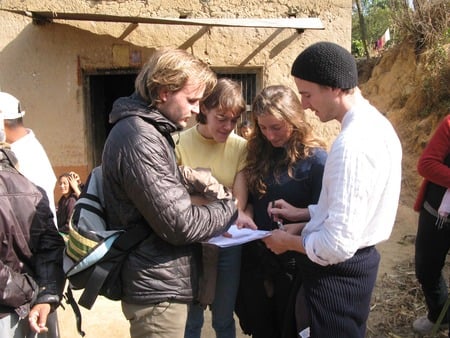
The Maintenance Manual team discuss the outcome of a local community trial of the first draft of the maintenance assessment system. It was review several times as a result of input from the CHDS (the local NGO and HH partner) the Chair of the Village Sanitation Committee using the system and the community teams.
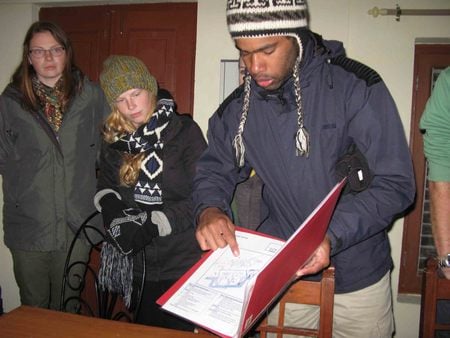
The Construction Manual team present their work to the group and CHDS.
The two tradespeople came to the Studio from a very different route. One, came via the international plumbing organisation IAPMO (International Association of Plumbing and Mechanical Officials), and had strong support from the organisation’s leader. The other, a past plumbing champion in the Worldskills competition, was also supported by the Worldskills Foundation leader, who has also supported four similar international projects in 2013. Both gave their time to work ‘on the tools’ to implement a proven design developed in last year’s Studio (and tested through the wet season) that will improve rainwater quality. They worked with the local plumbing team to train local people in new skills and improve village plumbing work. Both had their travel costs provided. So two passionate individuals, supported by strong organisations with a broad charter aimed at using trade skills to improve living conditions and assisting the training of people in developing countries. These organisations actively link trades with communities, other professions and industry.
The plumbing team with tools and parts for a day’s work about to start the climb down to the houses needing retro-fitting of first flush diverters.
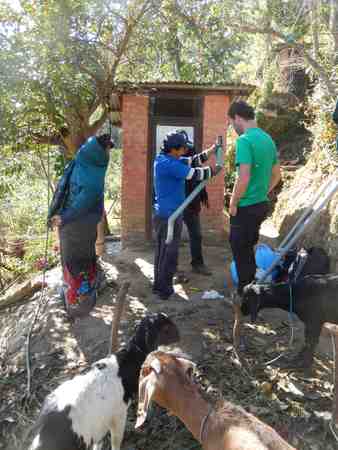
The plumbing team mocks up a solution to the new rainwater diverter to improve water quality with the lady of the house hearing about the work.
The filmmaker came with broad experience in making movies, teaching filmmaking and animation. His brief was to make a short 10 minute film that captured the essence of the Village Sanitation Program. He found a host of local ‘stars’ telling the story of life before and after sanitation, how the program works and what it has achieved. He was invited to join the Studio, with some costs paid, but hardly a commercial arrangement. Again a passion for telling the story, and an interest in working with local people, fired his involvement.
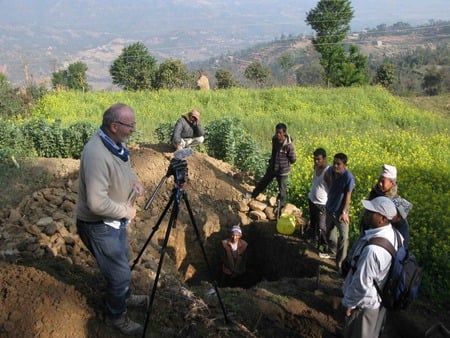
Filming the start of construction, excavation of the biogas system hole.
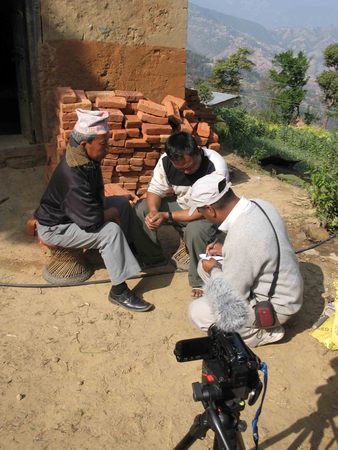
Bishnu Shrestha (CHDS Nepal) played a major role in developing and presenting information in the short film on the Village Sanitation Program….here he is briefing the ‘community actors’ during the filming of the story.
At the end of the Studio, there was a group consensus that all learnt from the project. By HH’s assessment, work valuable to the ongoing Program, was done by all the participants.
The one concern – why is there not an easier path to award formal course credits to the students? How can the universities make the Studio an elective course? Are the blockages to do with insurance, the ‘simple’ built form of the design problem or lack of organisational resources? Can some credit be given to make the link between the real world practical design experience and the teaching environment of the university?
HH is happy to receive considered proposals from staff and students of any University that are able to develop ways to integrate real projects with their educational programs. Lets have future engineers, health and allied health professionals, environmental scientists, architects, industrial designers, sociologists and many more combine with local communities to help solve complex problems.
Perhaps the universities can learn some lessons from the trade organisations noted above. They can not only assist, or encourage, student participation but also see that the work completed in these programs can improve the lives of those who often struggle to complete primary school.
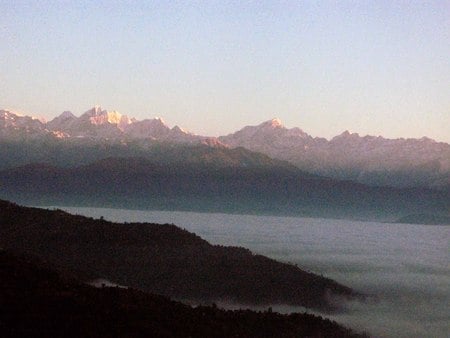
Mountains…. of ideas and potential for change.
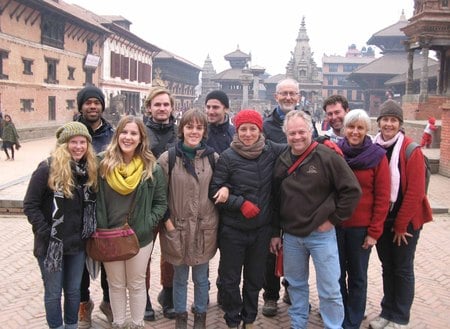
Visitors that contributed to the Sanitation Studio 2014 (from L to R)
Cate, Frank, Kirby, Jasper, Liv, Harry, Lucy, Simon, Jed, Andrew, Karin and Catherine









